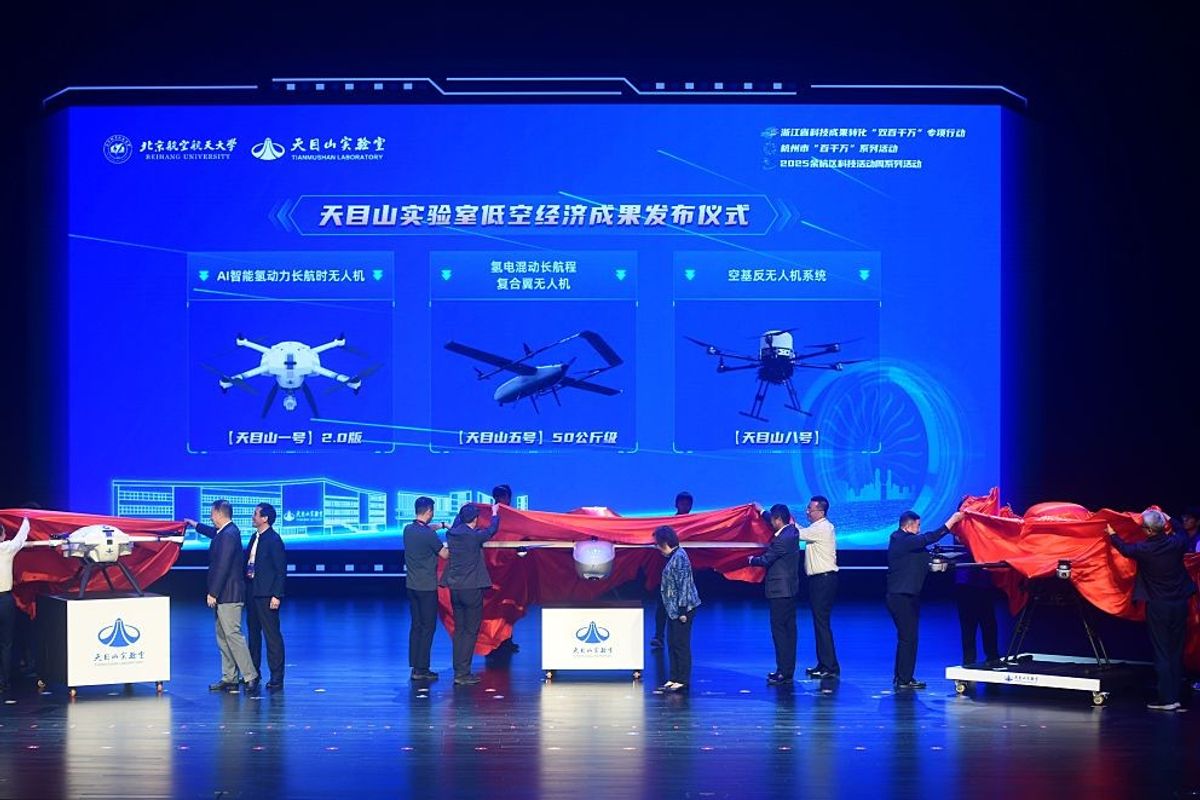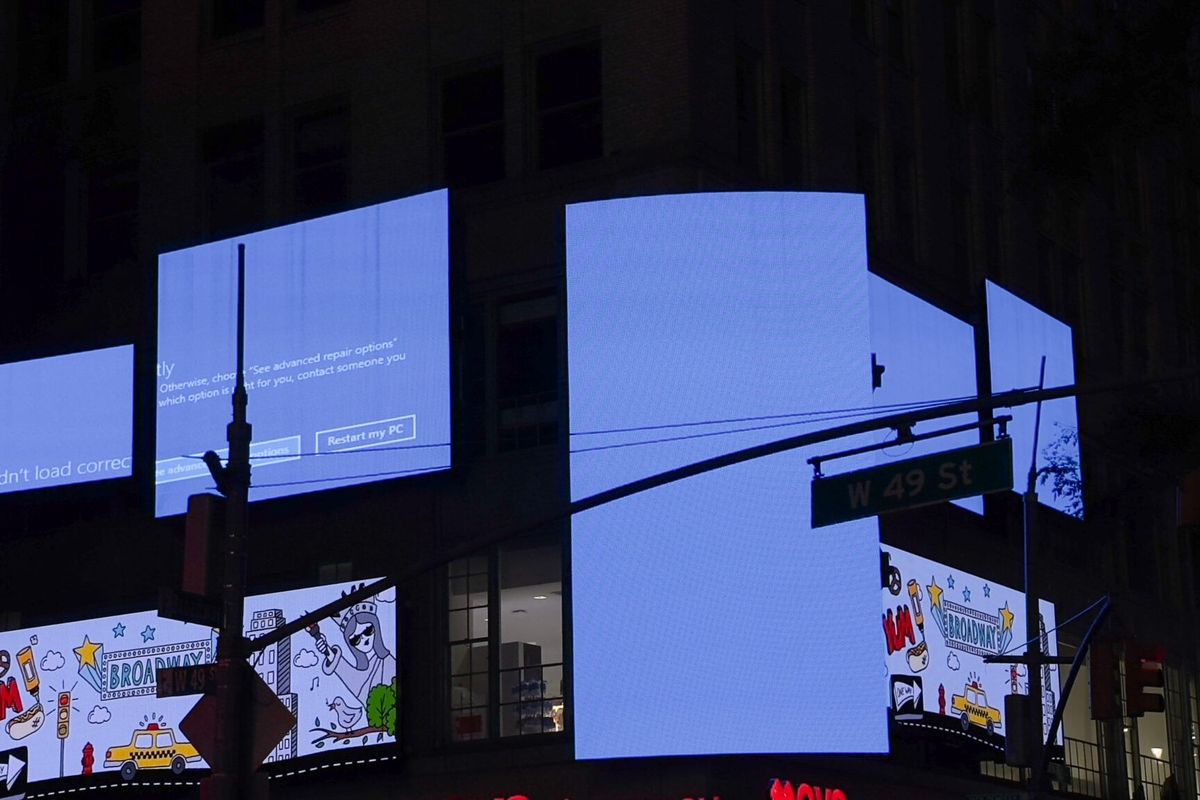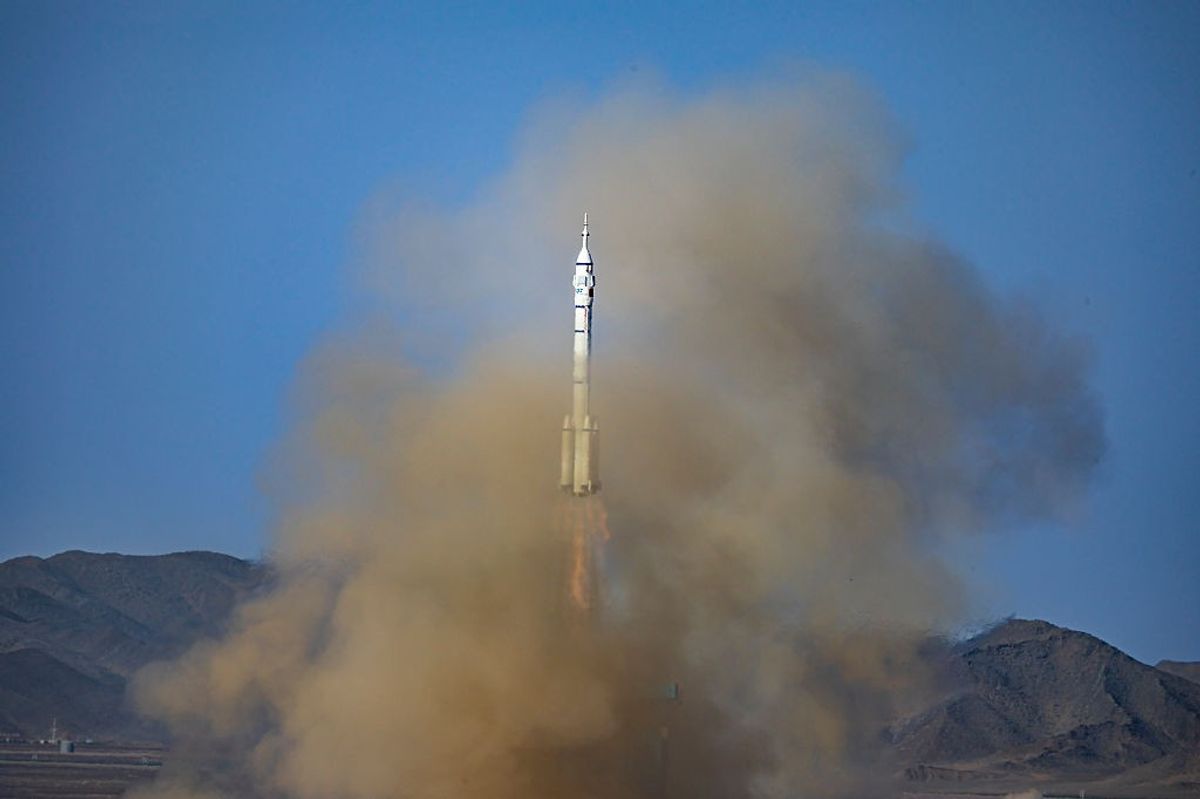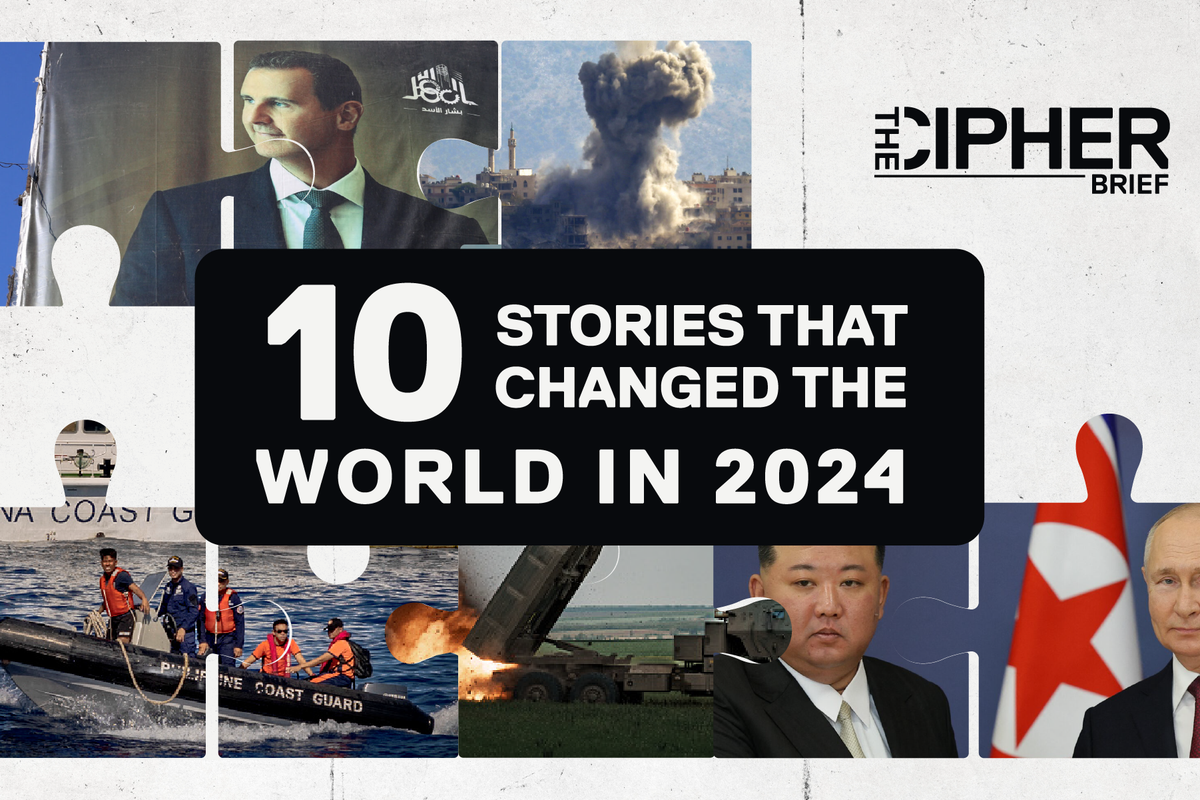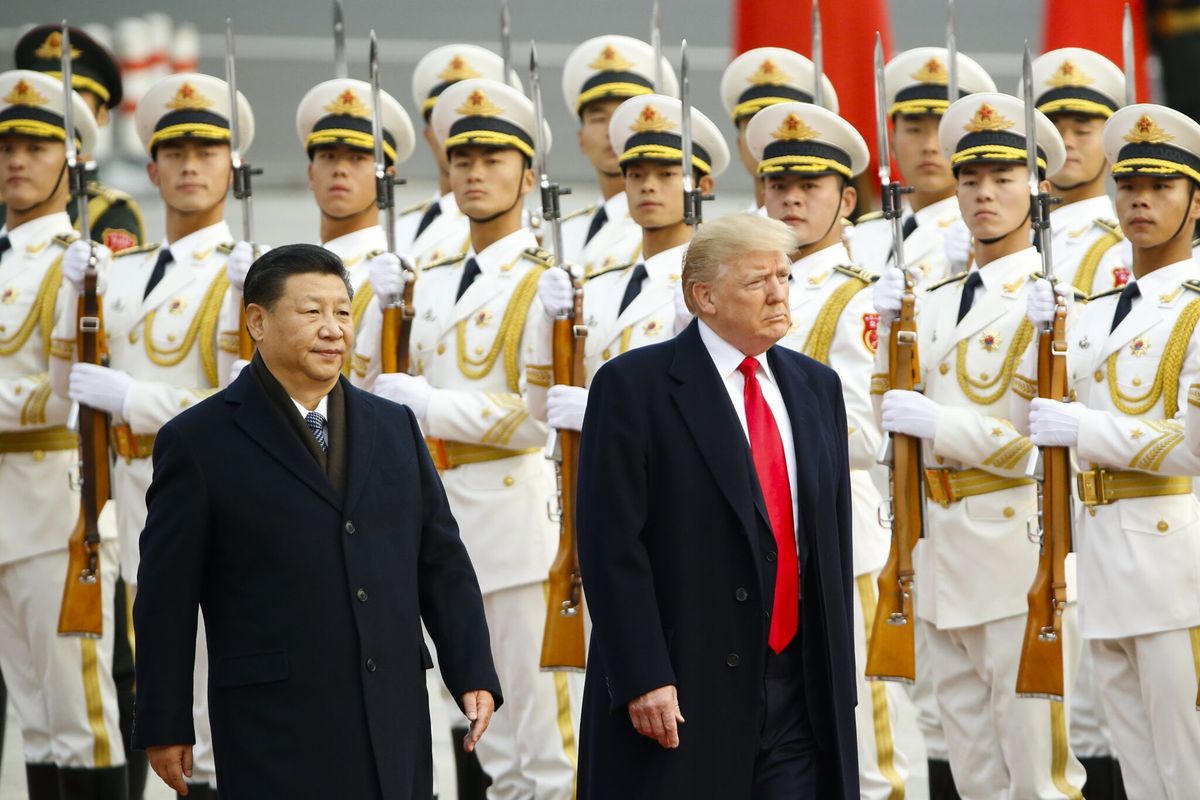SUBSCRIBER+ EXCLUSIVE REPORTING — Taiwan’s new president Lai Ching-te, in his inaugural address last week, called on the People’s Republic of China (PRC) to “cease their political and military intimidation against Taiwan” and “ensure the world is free from the fear of war.”
Which prompted — more fears of war. And fears of market turmoil and a global economic crisis.
China quickly surrounded Taiwan with a two-day military exercise, called Joint Sword-2024A, that was built to intimidate. "Strong punishment," the People’s Liberation Army (PLA) declared, for the self-ruled island's "separatist acts." PLA warplanes armed with live missiles circled the island in attack formations, China’s coast guard conducted "harassment" drills of civilian ships in Taiwan’s waters, and Chinese flotillas veered to within a stone’s throw from the coastlines of the Taiwanese islands of Kinmen, Matsu, Wuqiu and Dongyin.
The PRC-owned Global Times propaganda website said the show was “designed to surround the island of Taiwan from both the east and the west…[and] display the PLA's strike capability across all directions of the island without any blind spots, forming a situation where the island is pinned down from both sides.”
In other words, an exercise in blockading the island.
Experts and U.S. officials believe China is preparing militarily for a possible takeover of Taiwan, the island it has claimed since the birth of the PRC 75 years ago. China’s leader Xi Jinping has said repeatedly that “unification” with Taiwan is an inevitability, though he has stressed that an invasion would be a last resort.
An actual invasion and occupation of Taiwan would present enormous challenges for China. Taiwan is home to 23.2 million people and a modern military armed with U.S. weapons systems. While Taiwan’s arsenal is no match for the looming Goliath across the Straits, it could do extensive damage to the PRC; over the past 70 years, Taiwan has consistently been one of the largest purchasers of U.S. defense equipment, according to the Congressional Research Service. The national security supplemental foreign aid package signed by President Biden on April 24 contained $1.9 billion for weapons parts for Taiwan.
More realistic, in the view of many observers, is that China might impose a blockade aimed at strangling Taiwan’s proudly capitalist economy. A blockade would no doubt cost fewer lives; and while the U.S. might use force to defend Taiwan from an invasion, it’s hard to imagine American troops coming to Taiwan’s aid if Xi chooses the blockade option.
A blockade would obviously be less menacing than a full-scale invasion, but in the world’s money markets, Taiwan’s exalted status as “Silicon Island” makes even a whispered threat of a Chinese blockade a terrifying prospect.
“A sustained Chinese blockade of Taiwan would be economically catastrophic,” Tufts University professor Chris Miller, author of the influential book Chip War: The Fight for the World’s Most Critical Technology, told The Cipher Brief. The reason? “Taiwan's central role in providing a large share of the world's processor chips.”
What a blockade would look like
A textbook for Chinese military officers, The Science of Military Strategy, available on the U.S. Air Force’s Air University website, describes a “strategic blockade” as a tactic to “destroy the enemy's economic and military relations with the outside world, weaken its combat capability and war potential, and make it isolated and helpless…It shocks the enemy politically, economically, and psychologically.”
It's easy to see how Taiwan would be punished by an effective blockade. Its western, China-facing ports are responsible for nearly all the island’s shipping, and Taiwan is heavily dependent on imported food and agricultural products.
It also relies heavily on imported energy sources. In 2022, according to a report published by the Atlantic Council, Taiwan imported 44 percent of its energy in the form of crude oil from the Middle East, where China has been working to build influence. Another 30 percent of Taiwan’s fuel came from imported coal and coal products, and 19 percent from liquified natural gas. President Lai has spoken of boosting Taiwan’s renewable electricity production to 30 percent by 2030, up from 11 percent today.
Militarily, experts say a blockade would mean no major amphibious landings, but no shortage of disruptions. PRC coast guard boats might interdict cargo ships at sea and subject them to interminable searches for contraband. Undersea communications cables could be ruptured and blamed on mysterious malign actors. And a full naval blockade of Taiwan, enforced by mines, submarines and surface ships, would make resupplying sufficient food and fuel to the island all but impossible.
Last week, before the latest drills had begun, Lt. Gen. Stephen Sklenka, deputy commander of the US Indo-Pacific Command based in Hawaii, told the Australian National Press Club in Canberra that China was “an equal opportunity bully,” citing multiple encounters that look like dry-runs for blockade enforcement.
“Just since 2021,” Sklenka said, “we’ve seen roughly 300 risky and coercive PLA intercepts of US and allied partner forces throughout this region. These encounters not only contravene rules and norms governing behavior among militaries, but they also frankly endanger lives, and they create conditions for escalation.”
The U.S. would have difficulty protecting Taiwan from a prolonged blockade, Lonnie D. Henley, who served for 40 years as a U.S. intelligence officer specializing in the Chinese military, wrote in a 2023 report, Beyond the First Battle – Overcoming a Protracted Blockade of Taiwan, published by the U.S. Naval War College.
“While a blockade might include intercepting ships at sea, the primary focus would be on sealing airfields and ports, particularly on the west coast of Taiwan,” Henley wrote. “China could sustain that type of blockade indefinitely. Penetrating a prolonged blockade and keeping Taiwan alive would require a serious U.S. investment in systems and operational concepts that we currently do not have.”
It’s all about the chips
To understand the economic impact of a blockade, one need only look at the semiconductor numbers.
According to the U.S. International Trade Commission, Taiwan is home to four of the world’s top ten chip manufacturers, including the world’s largest, Taiwan Semiconductor Manufacturing Company (TSMC). Market intelligence firm TrendForce estimated that as of December 2023, Taiwan had a 46 percent share of global semiconductor manufacturing capacity, and the estimates were even starker when it came to advanced manufacturing required for high-end chips: Taiwan dominated the field with a whopping 68 percent share.
“There’s no multitrillion-dollar Nvidia Corp. or Apple Inc. without the chips manufactured on this island,” Bloomberg News global tech senior executive editor Tom Giles wrote last week, in a piece that explained why he joined other tech industry analysts in Taipei to observe President Lai’s inaugural and China’s response.
“Taiwan Semiconductor Manufacturing Co. is the most important company not just here,” Giles wrote, “but also to a good chunk of the U.S. stock market.”
TSMC reported a jaw-dropping 60 percent increase in revenues in April, on top of a 34 percent increase in March, thanks to rocketing demand for the company’s chips that support artificial intelligence development. "Almost all the AI innovators are working with TSMC to address the insatiable AI-related demand for energy efficient computing power," CEO C.C. Wei said during the company's first-quarter earnings call.
Tufts University’s Miller told The Cipher Brief that while the U.S., Japan, and several European countries are trying to build more resilient supply chains by bringing new chip-making facilities on line, “these efforts will take half a decade to begin to bear fruit. In the meantime, the world economy hinges on China's decisions in the Taiwan Straits.”
How the U.S. might respond
In the event of a Chinese blockade, it’s possible that the U.S. might try to help Taiwan by trying to bring supplies to the island. Miller said such interventions would be both difficult and dangerous.
Blockade-running, Miller wrote, “means that U.S. forces must get cargo ships into the west coast ports on a regular basis, in the face of extensive mining and hostile fire, close to China and under conditions of Chinese air superiority.” He and others noted that China has a broad range of weapons that it could use to destroy cargo ships. “Resupply by air could be symbolically important if it were feasible, but that seems extremely unlikely. Whatever wizardry U.S. stealth and electronic warfare can achieve, there is no way to hide a large cargo jet or make it anything but a fat, slow, and extremely vulnerable target.”
The U.S. could also retaliate with diplomatic measures – denying China access to international markets and financial exchanges.
Henley said that China’s leaders might choose to continue a blockade anyway, “because they have consciously accepted that enormous cost.” He said that the showdown might come down to a basic question: How long could China sustain the punishment imposed by the U.S.?
“That is hard to answer,” Henley said, “but the easy part seems to be, a heck of a lot longer than Taiwan can. We are not on the winning end of that cost-imposition contest.”
The U.S. has made major efforts recently to reduce its dependence on Taiwan, China and other nations for chips. The Biden administration pushed through the CHIPS and Science Act of 2022, which authorized$52.7 billionfor semiconductor research, development, manufacturing, and workforce development, plus tax incentives and other inducements to buy American.
China is also pushing for chip self-sufficiency for its electronic exports. This week the Chinese government announced it had set up the National Integrated Circuit Industry Investment Fund, to be backed by $47.5 billion in government funds, to develop China’s chip industry, and to skirt U.S. export controls on U.S.-derived technology.
Meanwhile, the White House says it is involved in “intense diplomacy” to avoid either an invasion or blockade of Taiwan.
As National Security Advisor Jake Sullivan put it in January, “At the end of the day, it really comes down to a set of actions that we take here domestically, a set of investments we make in our allies and partners, and then just direct, dogged diplomacy with China built on the proposition that, yes, we’re going to compete but we also are going to inhabit the same planet, and we have to work together to ensure that we don’t end up tipping over into conflict.”
Read more expert-driven national security insights, perspective and analysis in The Cipher Brief.




